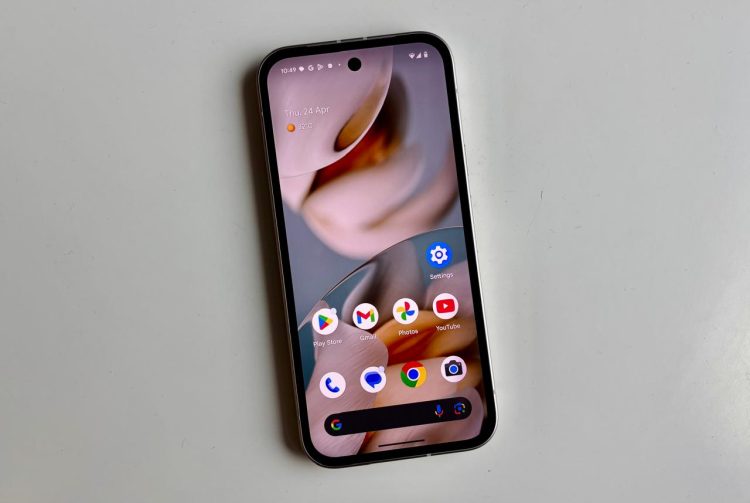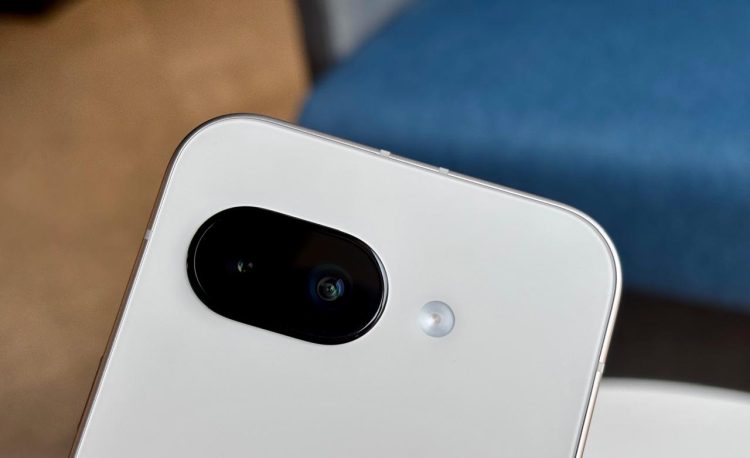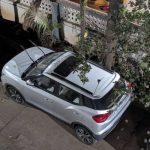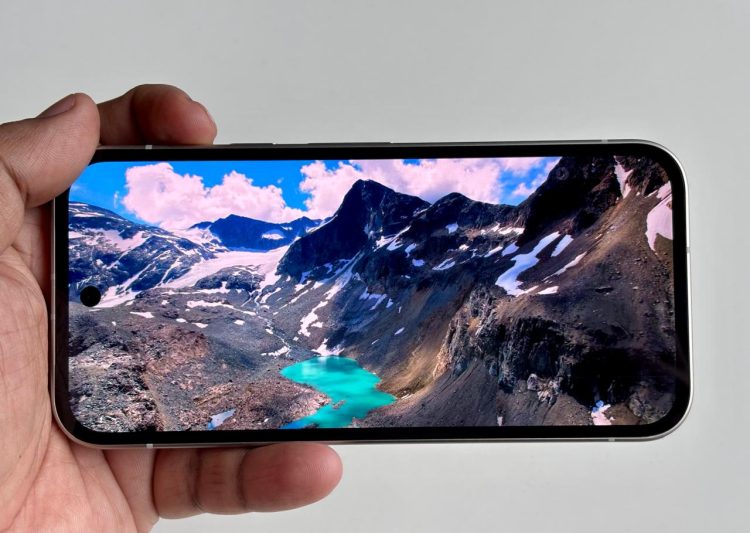Google Pixel 9a Review
The Google Pixel 9a stands out in the mid-range smartphone market, offering flagship performance, an impressive camera, and great battery life for just ₹49999. Powered by the Tensor G4 chip, it handles tasks smoothly and provides useful AI tools. Its camera system surpasses most competitors in this price range, although it suffers from a generic design, plastic back, and slow charging compared to the iPhone 16e.
For those looking for an affordable Android phone with clean software and excellent photography, the Pixel 9a is a solid choice. While it lacks the polish of the Pixel 9 and the power of the iPhone 16e, it focuses on the essentials, making it our top mid-range pick for 2025. If you can overlook its design and charging speed, it offers incredible value and highlights the strength of Google’s A-series.
The Good
- Solid Camera Performance
- 6.3-inch P-OLED Bright Display
- Practical AI Features
- Lightweight Design
The Bad
- Simplistic Design
- Heats During Gaming
- Compromised Camera Specs
- Only 8GB of RAM
-
Display
-
Performance
-
Camera
-
Battery
A few months back, we reviewed the base variant of Google’s Pixel 9 series, a premium device packed with cutting-edge features. Now, Google has launched the most affordable variant, the Pixel 9a, which positions itself as a direct competitor to the iPhone 16e in the mid-range market. Priced at ₹49,999, the Pixel 9a promises flagship-level performance, impressive cameras, and Google’s AI while maintaining an accessible price point. But does it live up to the hype, or does it cut too many corners to hit that price? Let’s find out.
Design

The Pixel 9a’s design departs from the iconic Pixel aesthetic, most notably by ditching the signature camera bar that has defined the series since the Pixel 6. Instead, it opts for a minimalist, almost flush dual-camera module that protrudes only slightly from the back, giving the phone a flat profile that sits neatly on a table. While this change eliminates the top-heavy feel of previous Pixels, the rear design feels oddly simplistic, almost as if a kid from kindergarten designed it. The recycled polycarbonate back (a step down from the Gorilla Glass 3 on higher-end models) feels sturdy but lacks the premium texture of glass or metal. However, the matte finish resists fingerprints, and the phone’s 186g weight makes it lighter than the Pixel 9, enhancing one-handed use.

The Pixel 9a retains the flat edges and rounded corners of its siblings, with a recycled aluminium frame that adds durability and an IP68 rating for dust and water resistance. The 6.3-inch P-OLED display is a highlight, boasting a 120Hz refresh rate and 2700 nits peak brightness, 35% brighter than the Pixel 8a. However, the bezels are noticeably thicker than those on the Pixel 9, and Gorilla Glass 3 (instead of Victus) feels like a compromise. The power button and volume rocker are clicky and well-placed, but the lack of a 3.5mm headphone jack and microSD card slot is par for the course. Available in Obsidian, Porcelain, Peony (pink), and Iris (blue), the colour options add a playful touch, though the overall design leans generic compared to the distinctive Pixel 9.
Performance
The Pixel 9a is powered by Google’s Tensor G4 chip, the same processor found across the Pixel 9 lineup, paired with 8GB of RAM (down from 12GB in the Pixel 9) and 128GB or 256GB of storage. This chipset easily handles everyday tasks, from scrolling through social media to multitasking between apps. In benchmark tests, the Pixel 9a posted a Geekbench 6 single-core score of 1,737 and a multi-core score of 4,547, nearly identical to the Pixel 9. However, it lags significantly behind the iPhone 16e’s A18 chip, which scored 3,390 and 8,279, respectively. For graphics, the Pixel 9a achieved 7775 on Geekbench 6, surpassing the previous generation Pixel 8a. Real-world gaming performance is solid, with smooth gameplay in titles like Genshin Impact at medium to high settings, though the phone warms up during extended sessions.

Where the Pixel 9a shines is its AI integration, though it’s slightly limited compared to its pricier siblings due to the 8GB RAM. It runs a smaller version of Google’s Gemini Nano AI, which processes text-based tasks on-device but lacks some advanced audio and image-based features like Pixel Screenshots and Call Notes. Still, it supports practical tools like car crash detection, Call Assist, and Gemini Live, which allows conversational interactions and camera/screen sharing. Pixel Studio, for generating custom images, adds a fun, creative element. The trade-off is that heavy multitasking or frequent app-switching may lead to occasional reloads, but for most users, the performance is more than adequate for a ₹49999 phone.
Camera

Google’s Pixel phones have long been synonymous with class-leading photography, and the Pixel 9a upholds this reputation, though it makes some compromises. The dual-camera system features a 48MP primary sensor (f/1.7, OIS) and a 13MP ultrawide (f/2.2), paired with a 13MP front-facing selfie camera. The primary sensor captures vibrant, detailed shots with excellent dynamic range, handling challenging lighting conditions like panning up a building on a sunny day without overexposure or underexposure. However, the downgrade from the Pixel 8a’s 64MP primary sensor is noticeable in low-light scenarios, where noise creeps in. The ultrawide lens performs well for landscapes but struggles with edge distortion.




Compared to the iPhone 16e’s single 48MP camera, the Pixel 9a’s dual setup offers more versatility, but the iPhone pulls ahead in zoom performance, delivering sharper details at 8x digital zoom. Google’s Super Res Zoom (up to 8x) relies heavily on software, which can sometimes produce artifacts. Video recording is solid, with 4K at 30fps showcasing good stabilization and colour accuracy, though the Pixel 9 supports a wider range of resolutions. AI-driven features like Add Me (inserting the photographer into group shots) and Best Take (swapping faces for perfect group photos) enhance the experience, making the Pixel 9a’s camera a standout in the mid-range segment, even if it doesn’t match the Pixel 9’s 50MP main or 48MP ultrawide.
Battery
The Pixel 9a boasts the largest battery in any Pixel phone to date, a 5,100mAh cell, surpassing even the Pixel 9 Pro XL’s 5,060mAh. In our 4K video playback test at 80% brightness, the battery dropped by just 7% after 30 minutes, indicating strong efficiency for media consumption. While moderate to heavy users can drain the battery in a day, light users may extend it to two days.

Charging, however, is a weak point. The Pixel 9a supports 23W wired charging and 7.5W wireless charging, but it takes 35 minutes to reach 50% and about 105 minutes for a full charge. No charger is included in the box, which is disappointing but expected. Google’s new battery management features, like limiting charge to 80% or smart overnight charging, help prolong battery health, but the lack of reverse wireless charging is a missed opportunity. Compared to rivals like the Nothing Phone 3a Pro, which offers 68W charging, the Pixel 9a’s speeds feel sluggish.

